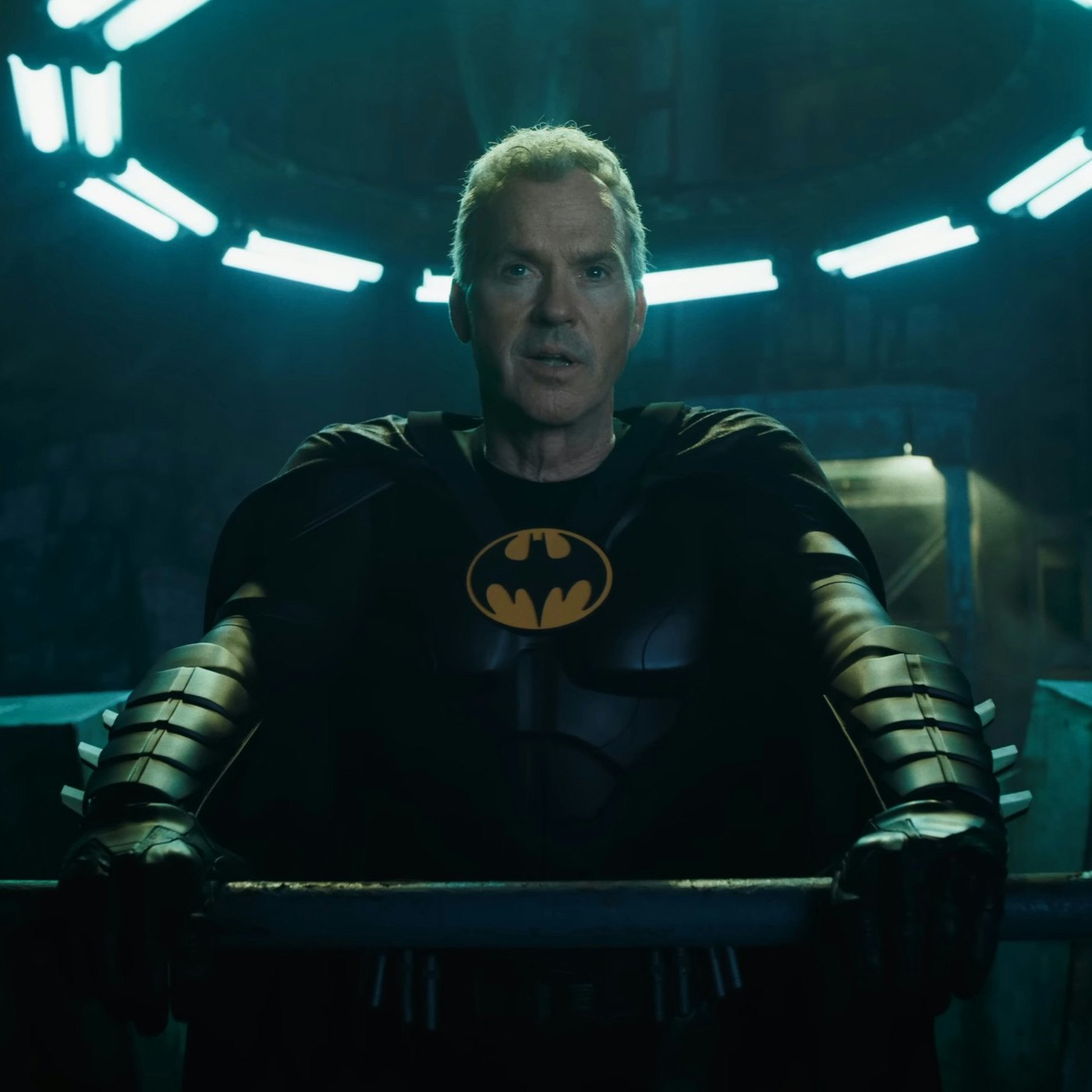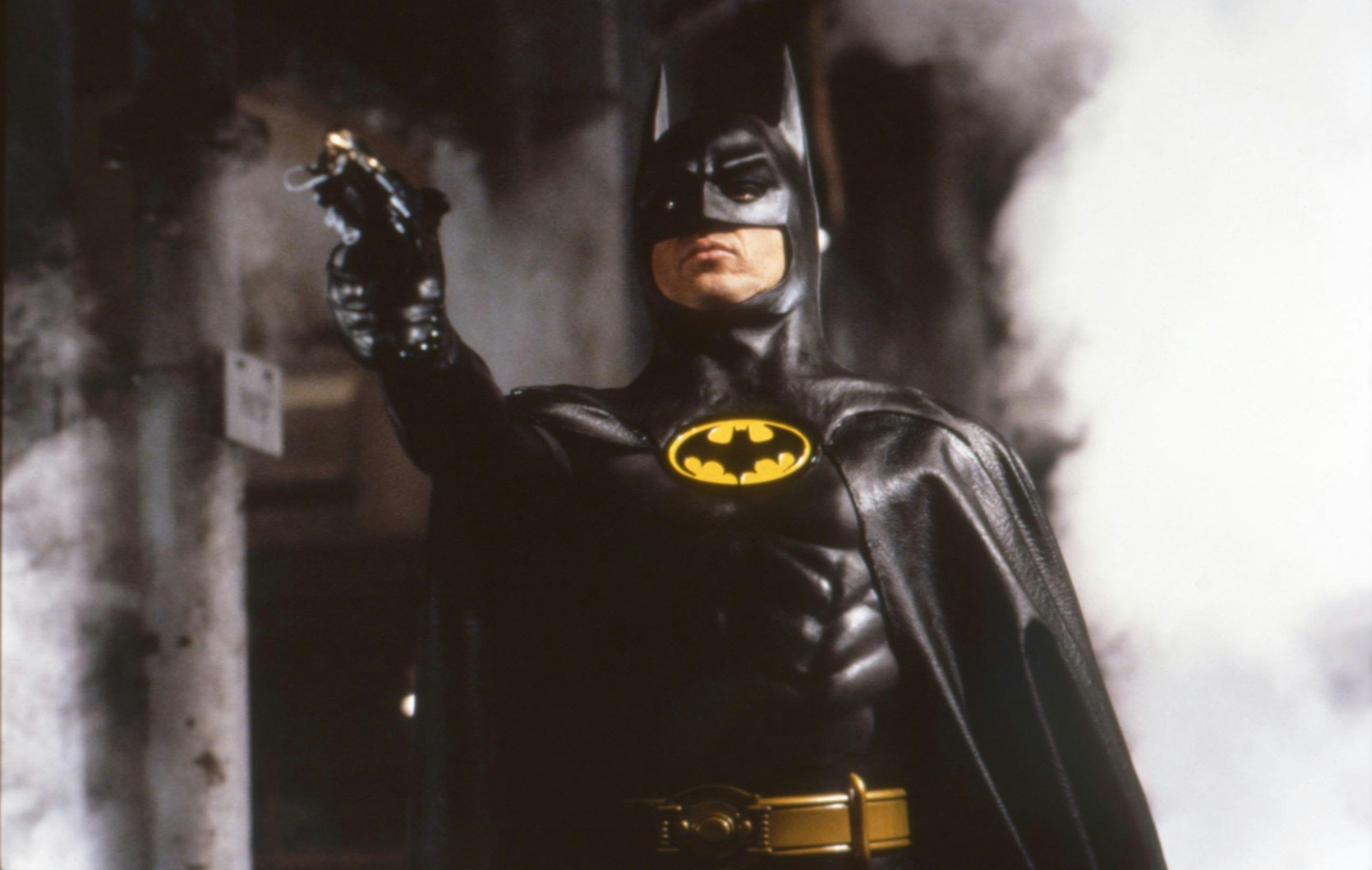
The Flash has a nagging paradox at its core: Its characters harp on the need to let go of the past, but the film is firmly tethered to images and characters from decades ago. Chief among these is Michael Keaton’s Bruce Wayne, who appeared in Tim Burton’s Batman (1989) and its sequel Batman Returns (1992), and whose comeback ends up so lopsided that it fails to clear the low bar of mawkish sentimentality set by modern, multiverse-obsessed superhero films. The best that can be said for his appearance is that, since Keaton is still alive, it at least avoids the ghoulish depravity of reviving a dead actor for cheap nostalgia (which The Flash does numerous times).
But since Warner Bros. would rather we focused on Keaton’s return than on Ezra Miller — whose troubling actions of late were barely acknowledged by the studio — we may as well take a page from their playbook and look to the Burton era ourselves, and how its half-baked transposition to The Flash helps kneecap the movie. To quote the commercial for Batman’s VHS rollout: let’s “give them what they want.”

Miller leads the movie’s malformed world (full of half-rendered human faces and babies that look like uncanny, Lovecraftian creations) as the red-clad speedster hero Barry Allen/The Flash, who uses his abilities to travel back in time to prevent his mother’s murder. In the process, he creates an alternate reality where his mother lives, but where he must team up with a younger (and more irritating) version of himself to undo far more disastrous consequences resulting from his fixation with the past.
On the other side of his time traveling, Barry realizes he’s living out the events of 2013’s Man of Steel and sets out to recruit the Justice League to thwart an alien invasion. Only instead of the Ben Affleck Batman with whom he’s acquainted, he finds an older version of the character played by Keaton — albeit one with little ethos or edge, and little cause for both abandoning heroism — whose Bat-suits and empty mansion are a spitting recreation of their equivalents in the Burtons films. However, something about the texture of this revival feels distinctly off.
On one hand, it serves as nostalgia for an audience who may be familiar with Keaton’s Batman, but it has little impact for Barry and no bearing on his character arc, beyond the realization that things are different now. For The Flash, moving forward means undoing his own mother’s resurrection — a potent dilemma overshadowed by the movie’s haphazard action — but it never involves leaving the idea of Tim Burton’s Batman behind, since Barry has little attachment to this version of the character to begin with. In the process, the audience is never forced to confront their own attachment either, despite the movie’s central theme of letting go of the past. It’s a theme with which Keaton’s appearance — along with a parade of uncanny, CGI-assisted cameos for similar nostalgia-bait — clashes wildly and uncomfortably. On the other hand, this version of Batman was also created by a specific artist, Tim Burton, but the character appears without the director’s involvement, or any of his cinematic signatures.

The gothic moodiness Burton brought to the character is replaced by flat daylight that says nothing and creates no sense of atmosphere, and though the character’s familiar vehicles and hideouts do appear, they lack the imposing grandeur with which Burton brought them to life, drawing from the days of German Expressionism to create operatic tableaus. No such visual approach appears to guide The Flash, a film not only born of pre-visualed set pieces, but one that feels as if it was released in theaters still in mid-production. Danny Elfman’s original Batman score sees a brief reprise, but it soundtracks images that feel entirely disconnected from the music’s orchestral intent; the notes, too, exist only to conjure memories of the past, without being rooted in emotions in the present.
Barry and Keaton’s Batman eventually enlist the help of an alternate Superman (Sasha Calle’s Supergirl) to fight the alien invaders, but their scenes unfold in empty, half-rendered digital fields with no backdrop for scale, and the characters themselves lack any physical heft. There’s an enormous aesthetic chasm between the film’s “real” and “unreal” scenes. When real actors interact or move through space, director Andy Muschietti’s camera remains grounded for the most part, and captures them at a safe enough distance that their gestures and interactions are legible; it’s functional, and bears at least a passing resemblance to Burton’s measured, operatic formalism (the “measured” part at least, in that the camera’s position remains largely fixed). However, when a fight scene begins, a switch is flipped. The frame becomes mostly CGI, and the “camera” takes on spectral properties as it floats haphazardly across the characters’ shiny, Polar Express-style digital maws, which warp and contort, like the faces in over-ambitious video game cutscenes on a PlayStation 2. Gravity and gravitas alike go straight out the window.
The other film most brought to mind by The Flash is Steven Spielberg’s ill-conceived Ready Player One, which unfolds in a VR landscape populated by familiar characters ripped from their original contexts and thrown together in a visual sludge (see also: The Iron Giant, who performs a thematic reversal in Spielberg’s film and becomes a weapon once more). Batman features as an extra both in Ready Player One as well as in the similar pop-culture-mashup film Space Jam: A New Legacy, and his appearance in The Flash isn’t that far off from either one.
Although he plays a supporting part here, he’s little more than a remnant of a bygone era, hovering around the edges of the silver screen not because he plays a vital narrative role — any actor of Keaton’s age could’ve filled in as far as Barry is concerned — but because he elicits a vague sense of recognition in one’s lizard brain, causing eruptions of applause when he repeats his line “You wanna get nuts? Let’s get nuts!” from the 1989 movie as if it were an iconic line of dialogue. In reality, it was something the character once uttered while trying to desperately convince Jack Nicholson’s Joker that his timid Bruce Wayne was intimidating and unhinged, before being shot. It’s a moment that worked in those specific narrative confines, but as a “badass” catchphrase hastening an action scene, it’s dead-on-arrival. As much as The Flash presses on about the need to move on from the past — something Barry needs to do if he wants to truly live — it remains shackled to a warped and manipulated memory.
The Flash does have hints of an in-world argument for lacking Burton’s eerie tone, in that Batman has helped rid Gotham of much of its crime. But the brief, noncommittal glimpses of the city feature no sense of its architecture or social fabric. The failure to ground Keaton’s Batman in a discernible physical reality reflects the film’s general lack of emotional reality too. There’s nothing tactile about this Batman or his world. He goes from existing as an extension of the stylized Gotham City in Burton’s universe, to existing as a Batman-shaped action figure (Retro Edition) in the modern Hollywood zeitgeist, with its endless reprisals of decades-old roles, like Tobey Maguire’s Spider-Man, Hugh Jackman’s Wolverine, Harrison Ford’s Indiana Jones — the list continues to grow.
In the end, Keaton’s appearance adds no weight to Barry’s potential sacrifice, because this version of Batman is merely a cipher. He’s intended to lure audiences with the promise of something familiar, but he ends up a depressing symbol of the cultural foothold that empty nostalgia currently has on modern blockbusters, from its legacy-sequels to its live-action remakes of cartoon classics — which, like The Flash, lack both a tangible present in which authentic emotions might resonate.







